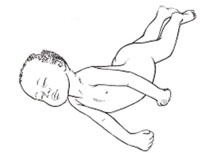Self-Assessment Questions (SAQs) for Study Session 3
Now that you have completed this study session, you can assess how well you have achieved its Learning Outcomes by answering the following questions. Write your answers in your Study Diary and discuss them with your Tutor at the next Study Support Meeting. You can check your answers with the Notes on the Self-Assessment Questions at the end of this Module.
SAQ 3.1 (tests Learning Outcomes 3.1 and 3.2)
Mention two or more bacterial vaccine-preventable diseases that have the same modes of transmission.
Answer
Pneumonia, meningitis, tuberculosis, pertussis and diphtheria all have the same mode of transmission: they are airborne bacteria.
SAQ 3.2 (tests Learning Outcomes 3.1 and 3.3)
What are the methods for preventing bacterial meningitis?
Answer
The preventive strategies of meningitis include early case identification and treatment, education of the community on the preventive methods such as avoiding close contacts with meningitis cases, and vaccination against meningitis.
SAQ 3.3 (tests Learning Outcomes 3.1 and 3.3)
If you observe a child who has a fever, neck stiffness and a rigid posture, as shown in Figure 3.6, what is the likely cause? What action will you take and why?

Answer
Fever, neck stiffness and rigid posture (as in Figure 3.6) are the signs of meningitis in a child. A young baby will also have bulging of the fontanelle. Tetanus can also be manifested with rigid posture. You should immediately inform the family and refer the child to hospital for urgent diagnosis and treatment.
SAQ 3.4 (tests Learning Outcomes 3.2 and 3.3)
Mention two major bacteria that commonly cause meningitis. Can you differentiate between the symptoms caused by these bacteria? What would you do if you encounter a person with these symptoms?
Answer
Neisseria meningitidis and Streptococcus pneumoniae are the two major bacteria that cause meningitis in children and adults. The two bacteria have similar symptoms (Table 3.1) and it is difficult to differentiate them by symptoms alone. As a Health Extension Practitioner, you need to refer patients with symptoms of meningitis to the nearest hospital or health centre.
Summary of Study Session 3
